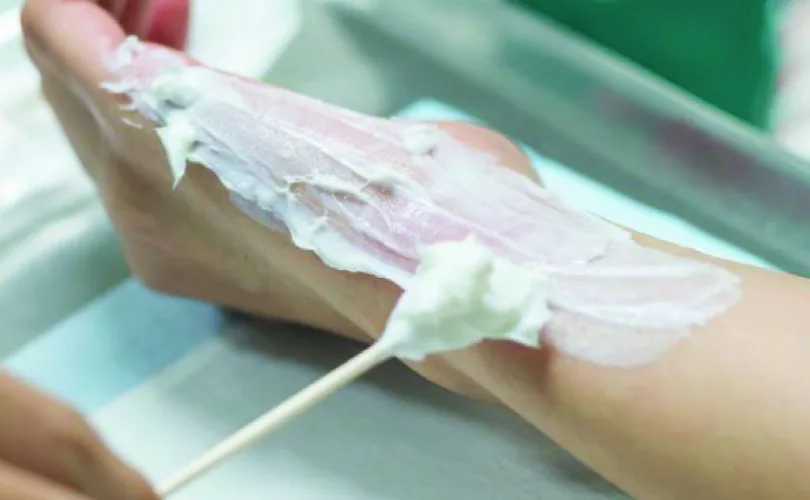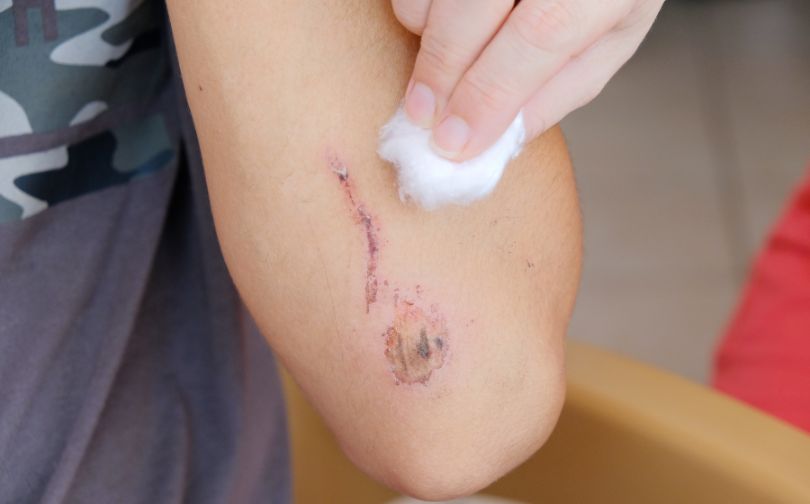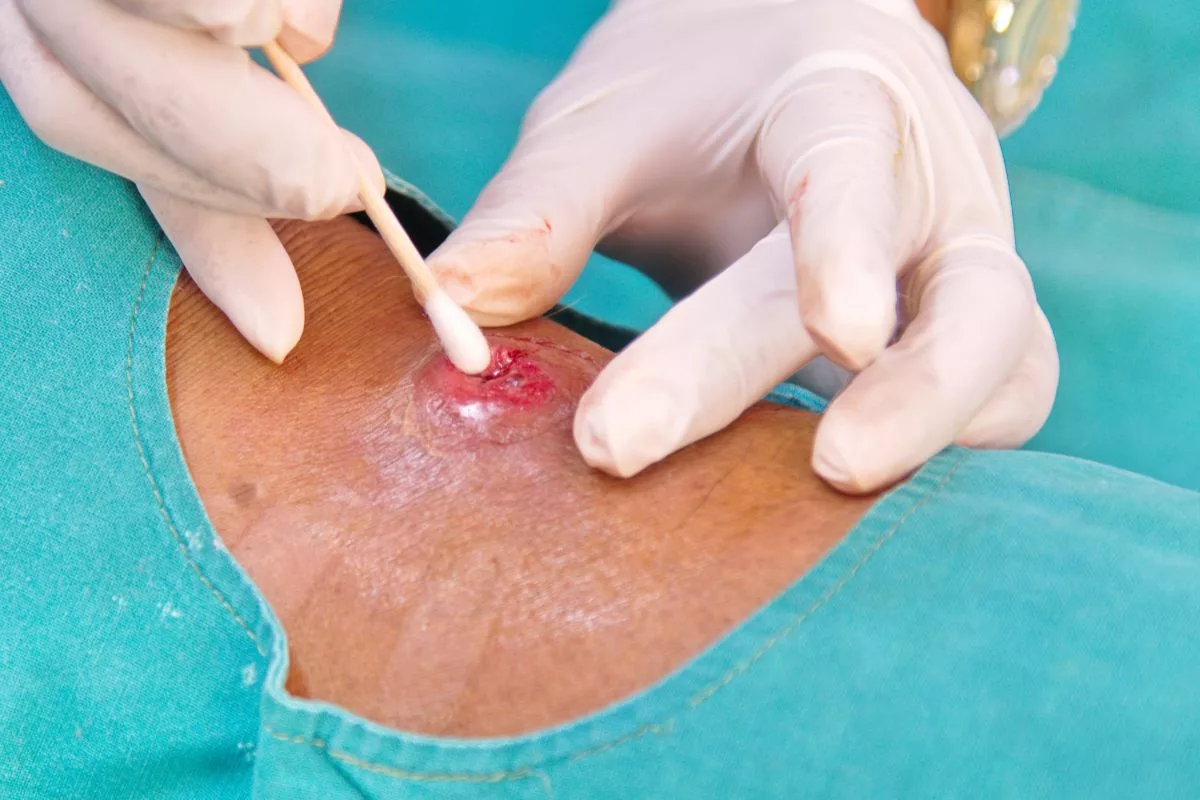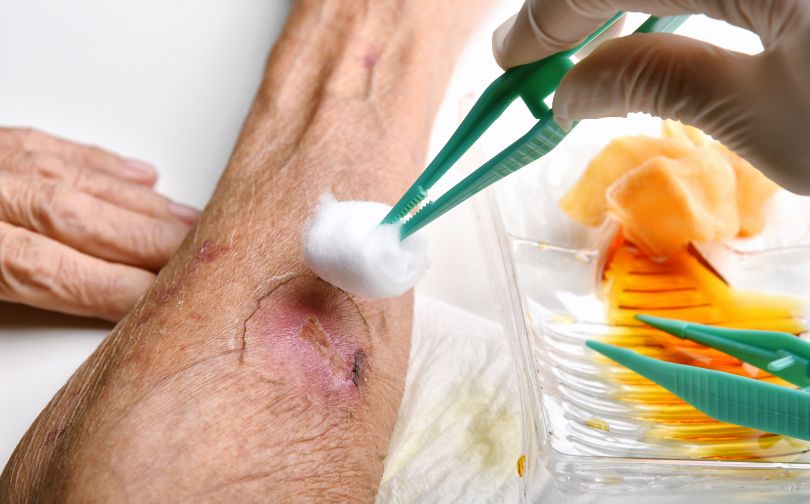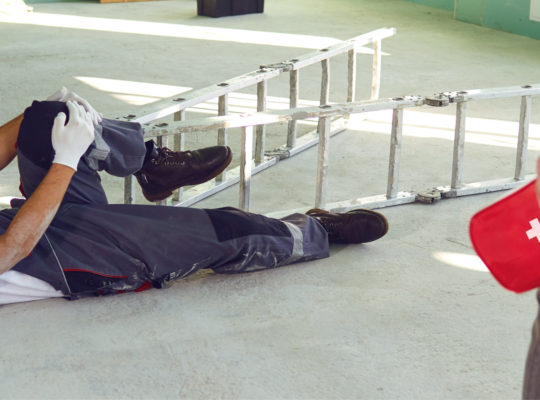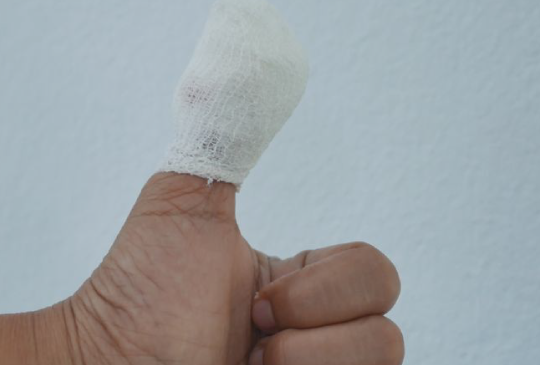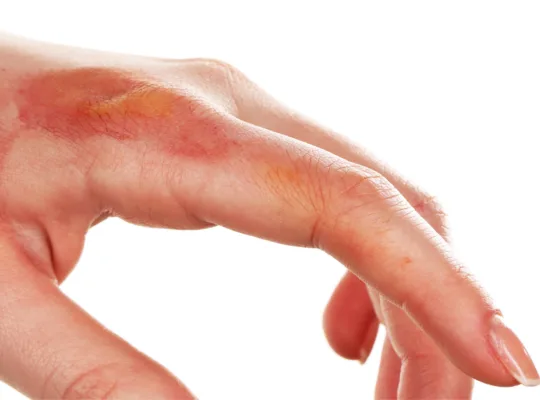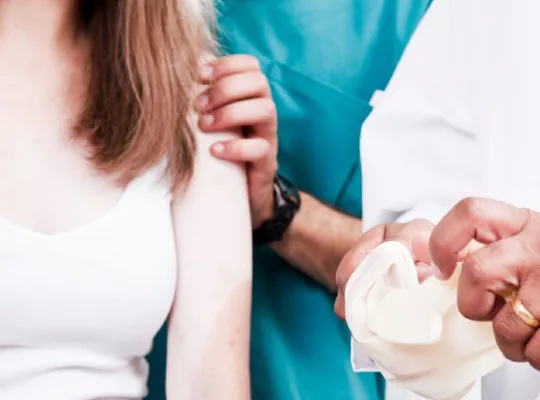It can be challenging to determine whether a wound is healing properly or showing signs of infection. Many people struggle with this, which often leads to confusion and concern. Redness, swelling, and pain are common, but knowing when these symptoms are part of normal healing or a sign of something more serious is difficult.
Infections can delay recovery and, in severe cases, lead to serious health issues. Did you know that nearly 1 in 20 surgical wounds become infected? Recognizing the signs early can prevent complications.
In this guide, you’ll find answers to these concerns and learn how to distinguish between an infection and natural healing. By the end, you’ll feel confident in knowing what to look for and how to care for your wound properly.
How Can You Tell When A Wound Is Healing?
If your wound is healing as it should, you will notice these signs.
Scabbing
The first stage of healing is called hemostasis, which is when the body tries to stop the wound from bleeding.
The blood coagulates or clots in order to form a barrier, preventing any further blood from leaving the body.
This process can take from several minutes up to a few days depending on the size of the wound. The scab will also protect the wound as it heals.
Swelling
The second stage of healing is the inflammatory stage. This is when the area around the wound swells. This protects the wound and any new tissue that begins to form.
It also brings more blood to the surrounding area, which contains oxygen and other important molecules needed for the process of healing. Wound swelling can last up to 5 days.
New Tissue
After a scab has formed over the wound and the area has become inflamed, new tissue will begin to grow to seal the wound.
This is called the proliferative phase. The body creates the cells it needs to fill in the area and create a new layer of skin. This stage of wound healing can feel itchy, which is a good sign.
Scarring
When the new tissue has formed and the wound has healed, the scab will fall off. Underneath the scab, there might be a scar.
If the wound has scarred then it has fully healed, but not all wounds leave a scar. It depends on the severity of the wound each person’s ability to heal.
How Can You Tell When A Wound Is Getting Infected?
Sometimes a wound won’t heal properly and it will become infected. Here are some signs that you should look out for – some of them are similar to signs of healing, but you need to pay attention to when they happen.
Heat
It is normal for a wound to feel warm in the first few days of healing. The area around the wound will swell with blood for protection, which can cause warmth.
The white blood cells also generate warmth as they fight off bacteria. If the wound continues to feel warm after several days, this could be a sign of infection.
Your body might be struggling to keep the bacteria away.
Swelling And Redness
In the first few days after a wound, the area is likely to be red and swollen. This is because the body is sending more red blood cells to that area.
This should settle down, but if it doesn’t it means the wound might be infected. Infected wounds will often have redness around the edges, which extends further outwards from the wound as the infection begins to spread.
If a red line comes from the wound, this means the infection is tracking into your bloodstream which is very dangerous.
This is sometimes accompanied by a fever as your body tries to fight the infection. If the infection spreads to other parts of the body it is harder to manage and can lead to further medical complications, including sepsis.
Pus And Discharge
Wounds will naturally release some clear or yellowish liquid called blood plasma. The scan that forms on the wound can be crusty and take on a yellowish appearance.
If your wound is still secreting liquid after several days, this could be a sign of infection. If the liquid is creamy and yellow or green, like pus, this is not a good sign. The wound may also begin to smell.
Pain
The healing process of a wound is not painless, but the pain should ease gradually over time. If you notice the pain worsening, this could be because the wound has become infected.
Infected wounds are often very painful to touch, as is the area around them. If you have sustained a large or severe wound, you will likely be on pain medication.
This can sometimes mask the pain of infection, so make sure you keep an eye out for any other signs that your wound could be infected.
What Should I Do if the Wound Is Getting Infected?
If you suspect a wound is becoming infected, it’s important to take quick steps to address the situation before it worsens. Common signs of infection include redness, swelling, discharge, and increasing pain.
Follow these steps to care for the wound and protect yourself from further complications:
- Clean the wound: Gently wash the wound with mild soap and water to remove dirt or debris. Avoid harsh chemicals like hydrogen peroxide or iodine, as they may irritate the skin.
- Apply an antiseptic: After cleaning, apply a suitable antiseptic solution or ointment to reduce the risk of bacterial growth.
- Cover the wound: Use a sterile bandage to protect the wound from contaminants. Make sure the bandage does not stick to the wound and change it regularly to maintain cleanliness.
- Manage pain and swelling: Over-the-counter pain relievers such as acetaminophen or ibuprofen can help reduce discomfort and inflammation.
If the wound worsens, showing signs of spreading infection, like increased redness, pus, or fever, seek medical attention.
Larger or deeper wounds, especially those from bites or dirty objects, should be evaluated by a healthcare professional. Red streaks extending from the wound may signal a serious infection, which requires immediate medical care.
How Can We Avoid Wound Infection in the Future?
Wound infections can lead to complications if not properly managed. By following preventive measures and maintaining good hygiene, we can significantly reduce the risk of infections in the future. Below are key practices that ensure effective wound care and promote faster healing.
Proper Wound Care
When dealing with a wound, it’s important to clean it immediately. Use clean water and mild soap to remove dirt and debris. Avoid scrubbing too hard to prevent further irritation
After cleaning, apply a suitable dressing to protect the wound. Changing the dressing regularly ensures that the area stays clean, reducing exposure to bacteri
Also, it’s best to avoid substances like hydrogen peroxide or iodine, as these can irritate the skin. They may slow down the healing process rather than help it.
Promote Optimal Healing Conditions
A moist environment promotes cell growth, aiding in faster healing. Dressings or gels designed to keep the area moist, such as MediHoney, are ideal for this purpose.
A balanced diet rich in vitamins and minerals is crucial for the body’s healing process. Staying hydrated also supports the body’s ability to recover from wounds
Hygiene and Monitoring
Always wash your hands thoroughly before touching the wound. This simple step prevents new bacteria from being introduced, reducing the risk of infection.
Be aware of potential signs of infection like redness, swelling, pus, or increased pain. If these symptoms occur, seeking medical advice promptly is recommended.
Lifestyle Considerations
Smoking and heavy alcohol consumption can weaken the body’s ability to heal. These habits can increase the risk of infection and slow down recovery.
Keep the wound away from dirt, animal hair, and other contaminants. This prevents bacteria from entering the wound, reducing the likelihood of infection.
FAQs
Is It Normal for a Wound to Be Red and Swollen?
Yes, some redness and swelling are typical during the early stages of healing. This is part of the body’s natural inflammatory response. However, if these symptoms persist beyond a few days or worsen, it could be a sign of infection, requiring medical attention.
What Should I Do If My Wound Is Discharging Pus?
If your wound is discharging pus, especially with a foul smell or unusual color, it may be infected. Clean the area gently, and seek advice from a healthcare professional to prevent the infection from worsening or spreading further.
Can a Fever Indicate a Wound Infection?
Yes, a fever may indicate that an infection has spread into the bloodstream. If a fever is accompanied by chills, increased pain, or other concerning symptoms, it is important to seek prompt medical care to prevent further complications.
How Long Does It Take for a Wound to Heal?
Wound healing varies depending on severity but generally occurs over several days to weeks. If there is no progress or the wound worsens after 10 days, consult a healthcare provider to evaluate for potential complications or infections.
Summary
To prevent infection it is important to sterilize the wound and keep it clean during the healing process. This includes changing the dressings regularly.
If you suspect that your wound is infected you should seek medical attention as you may need antibiotics.

